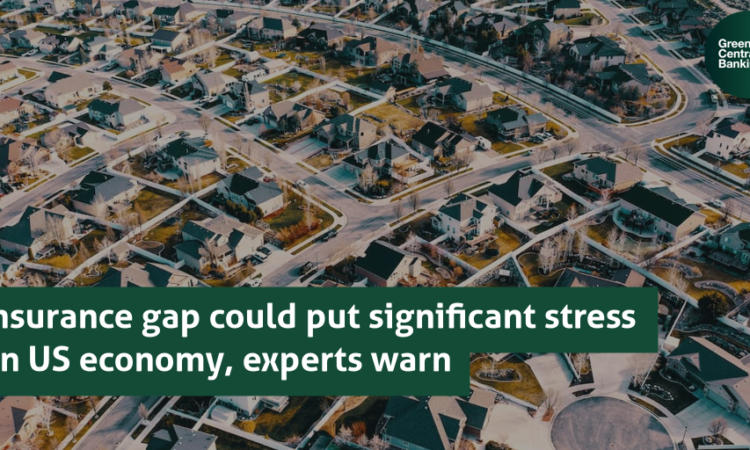
An insurance gap of US$28.7bn exists between what people are paying for coverage and what they should be paying given current climate change risks, economists and scientists said during a recent press briefing.
“Beyond even future [climate] change, you’ve got some big gaps in terms of what people are paying for protection against catastrophe risk versus what they should be [paying] in a resilient insurance world,” said Dave Burt, founder and CEO of investment research firm Delta Terra Capital.
While the risk of flooding and wildfires has gradually risen, insurance prices have remained relatively constant. Only in the last couple of years have insurers started to raise prices or even completely exit markets, leading to some homeowners going without insurance coverage.
Insurance risks are only likely to get worse in the coming years. Flooding alone is likely to increase dramatically, as rising sea levels “will change coastlines rather permanently” by up to two metres or more by the end of the century, said John Englander, an oceanographer and president and co-founder of the Rising Seas Institute.
While many effects of climate change are being dealt with on land, the heat being stored in the world’s oceans is responsible for the increase in extreme weather events, Englander said.
“The heat that’s being stored in the ocean is driving the weather changes, driving the extra rainfall, driving the wildfires to increase, and driving the melting glaciers on Greenland and Antarctica,” he said.
Burt said there is the potential for US$1.2tn in losses in the single-family home market if insurance premiums are priced as they should be and allowances made for future climate losses.
While the amount would not be on par with a global financial crisis, Burt said, it would have a huge impact on communities prone to increased natural disasters, potentially impacting 20% of the real estate industry.
And it may already be happening. During the pandemic, there was an increase in home sales which has started to fade, while homes considered at risk of climate change impacts have had an increase in listings.
“You’ve really just recently reached a point where these markets are at a level of supply that you can probably look forward to home price depreciation [in] these markets, beginning in 2025 or so,” Burt said.
Susan Crawford, a professor at Harvard Law School, said that while changes need to be made on the political level to mitigate this insurance gap, it is going to be difficult to adapt as 40% of America’s GDP comes from the coasts.
“Every part of our financial and legal system at this point is devoted, singularly devoted, to keeping the status quo in place,” she said.
When a sudden repricing on insurance happens because of increased climate risks, many housing areas are unlikely to recover as they did after the 2008 financial crisis. While government-sponsored enterprises (GSEs) Fannie Mae and Freddie Mac guarantee around 60% of mortgage debt in the US, neither take climate risk into account.
“They’re not going to bounce back once this happens; those houses are off the market, and we know that these housing issues can lead to real convulsions in our entire financial system,” she said.
While many seem to think it’s up to the insurance industry to price this systemic risk, Crawford argues that it’s up to the Federal Reserve and other federal regulators to help mitigate the risk.
But banking regulators are “not well coordinated, and none of them require climate risks disclosures the way the European Central Bank does, or capital requirements based on climate risks”.
While the Federal Housing Finance Agency does have the legal authority to require GSEs to account for climate risk, making it more expensive to buy a home will be politically difficult, as home ownership is part of the American dream.
Crawford said the US needs to do more on both the federal and local levels to account for risk, such as adopting a national adaptation plan, requiring climate risk scenarios, ensuring adequate capital requirements and encouraging people to move to safer places through incentives and subsidies.
“We are capable of doing this, but it would require genuinely admitting that we face dramatic climate risk as a country… Lots of people don’t understand the risks to which they’re exposed, including in America”.
This page was last updated July 11, 2024





